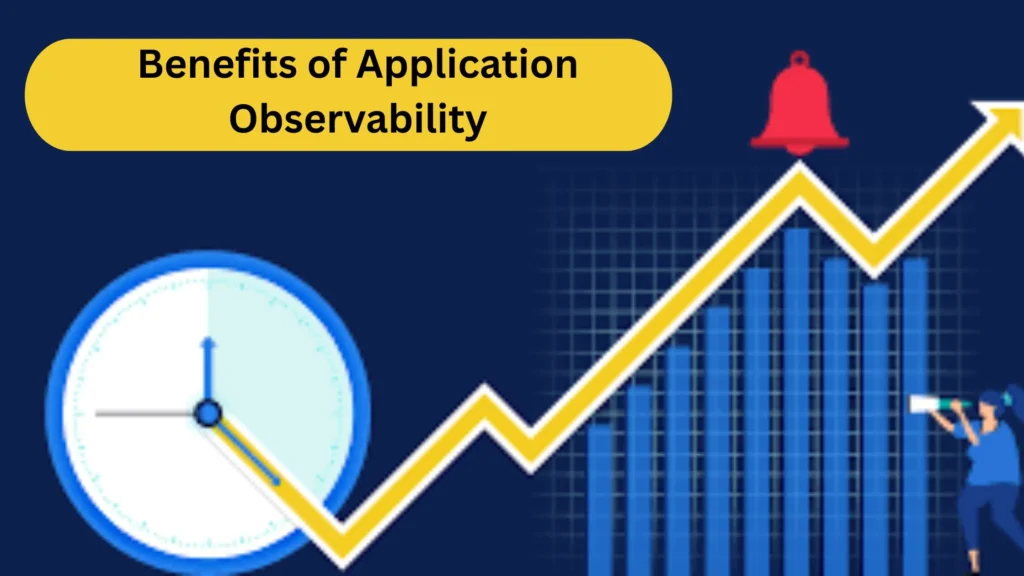The True Cost of App Downtime
Imagine you’re running an e-commerce platform during a flash sale, and suddenly, your app crashes. Every second lost costs money, frustrates customers, and damages your brand. That’s the harsh reality of application downtime.
The good news is that you can avoid these issues with application observability, a smarter, deeper approach to understanding system performance.
Let’s dive into what observability really means and why downtime avoidance is now the top concern of enterprise CIOs in app downtime prevention.
What Is Observability?
Observability is your window into the internal workings of complex software systems. It’s how developers, IT teams, and SREs understand what’s happening inside an application without having to dig deep into the code every time something goes wrong.
Unlike traditional tools that only tell you that a failure occurred, observability explains why, where, and how, in real time.
With real-time telemetry—the continuous stream of system signals like logs, metrics, and traces—teams can instantly spot patterns, diagnose issues, and make data-driven decisions.
Observability vs Monitoring
Let’s clear up a common confusion.
- Monitoring answers the question: “Is the system working?”
- Observability answers: “Why isn’t the system working as expected?”
So, when it comes to observability vs monitoring, think of observability as the next evolution. It provides deep context, supports proactive issue detection, and accelerates recovery.
Core Pillars: Logs, Metrics, Traces
The backbone of observability lies in three key pillars:
- Logs – Time-stamped records of discrete events (e.g., errors, transactions).
- Metrics – Numerical data about system performance (e.g., CPU usage, memory, latency).
- Traces – A record of the journey a request takes through the application.
Why Observability Matters
Root Cause Analysis
With root cause analysis tools, observability makes it easier to find the exact component or service causing trouble. Instead of sifting through endless logs, your team gets pinpointed insights instantly.
Predictive Insights
Thanks to advanced real-time telemetry, observability platforms can detect anomalies and alert teams before users are affected. It’s not just about fixing things—it’s about preventing issues proactively.
Reduced MTTR
When something breaks, you want it fixed fast. Observability reduces Mean Time to Resolution (MTTR) by providing instant visibility and actionable diagnostics.
Also Read: The Observability Imperative for Enterprises Adopting DevOps
How Enterprises Implement It
Enterprises operate in complex environments with thousands of services talking to each other. That’s why observability needs to scale.
Observability in Microservices
Modern apps rely heavily on microservices—small, independent services that together form a larger system. While powerful, this architecture adds complexity.
With observability in microservices, teams can trace every interaction across services, identify bottlenecks, and optimize performance without disruption.
Use of Tools
Businesses often implement observability using powerful tools such as:
- Datadog – For dashboards, alerts, and logs.
- New Relic – Great for performance insights.
- Dynatrace – Known for AI-powered root cause analysis.
These tools fall under the umbrella of site reliability engineering tools and are essential for managing distributed systems observability.
Also Read: Enhancing Dynatrace Application Performance Monitoring
Business Benefits of Application Observability
Implementing application observability is more than just a technical upgrade—it’s a strategic move that delivers measurable business outcomes.
Let’s explore how observability translates into value for your entire organization.
1. Preventing Incidents Before They Escalate
Unexpected outages and performance hiccups can cost businesses millions in lost revenue and customer dissatisfaction. With observability, teams gain proactive visibility into system behavior. You’re no longer reacting after users complain—instead, you’re spotting anomalies early and resolving issues before they impact your users.
This means:
- Fewer support tickets
- Less firefighting
- More time for innovation and feature development
Also Read: Application Performance Management in Banking
2. Improved Collaboration Between Dev and Ops Teams
One of the most overlooked benefits of observability is how it bridges the gap between development and operations. Developers and IT teams often operate in silos, using different tools and speaking different technical languages. Observability provides a unified view through shared dashboards and data visualizations.
This alignment allows:
- Faster triaging and issue resolution
- More efficient on-call rotations
- Seamless deployment pipelines
3. Enhanced Customer Trust and Experience
Your customers expect your application to be fast, responsive, and always available. A minor glitch in user experience can erode trust quickly, especially in competitive industries.
Observability enables you to meet those expectations consistently by:
- Reducing downtime
- Improving page load speed
- Ensuring consistent functionality across services
By delivering a smooth digital experience powered by application health monitoring and distributed systems observability, you build a reputation for reliability, a key factor in customer loyalty and retention.
4. Faster Innovation, Lower Risk
When systems are observable, teams have greater confidence to release updates and roll out new features without fear of breaking things. Root cause analysis tools and real-time data help isolate issues instantly if something goes wrong, significantly lowering deployment risks.
Also Read: Why Application Performance Testing Is Even More Important Now
5. Strategic Business Insights
Observability data isn’t just useful for tech teams—it’s gold for business leaders, too. By analyzing patterns in system usage, performance spikes, and user behavior, organizations can:
- Make smarter capacity planning decisions
- Optimize resource utilization
- Align IT performance with business goals
Our Observability Services
At Avekshaa, we’ve helped leading enterprises across India, the USA, and the UK implement best-in-class observability strategies tailored to their business goals.
Our comprehensive services include:
- Setup of observability frameworks and pipelines
- Integration of real-time telemetry across systems
- Customized dashboards and reports
- Intelligent alerting to minimize noise and maximize impact
Conclusion
Downtime doesn’t have to be part of your story. With the right observability strategy, you can anticipate problems, act fast, and give your users a seamless digital experience.
Ready to make your systems more resilient, intelligent, and future-ready? Get in touch with our observability experts at Avekshaa and discover how we can help your team unlock the full benefits of application observability.
FAQs
How is observability different from traditional monitoring?
Traditional monitoring tells you that a problem exists. Observability goes deeper by helping you understand why the problem happened using telemetry data like logs, metrics, and traces.
What are the key pillars of application observability?
The core pillars are:
- Logs – Detailed system events
- Metrics – Performance data
- Traces – End-to-end request journeys
Together, they offer deep visibility into your app’s behavior.
How can observability prevent system outages?
By continuously analyzing system signals and offering predictive insights, observability helps identify vulnerabilities before they impact users, ensuring app downtime prevention.
Which tools are commonly used for observability in large-scale apps?
Common tools include Datadog, New Relic, and Dynatrace—all essential site reliability engineering tools for large-scale and distributed applications.
Is observability necessary for DevOps teams?
Absolutely. DevOps and SRE teams rely on observability to maintain performance, reduce downtime, and support seamless deployments, especially in distributed systems and microservices architectures.


